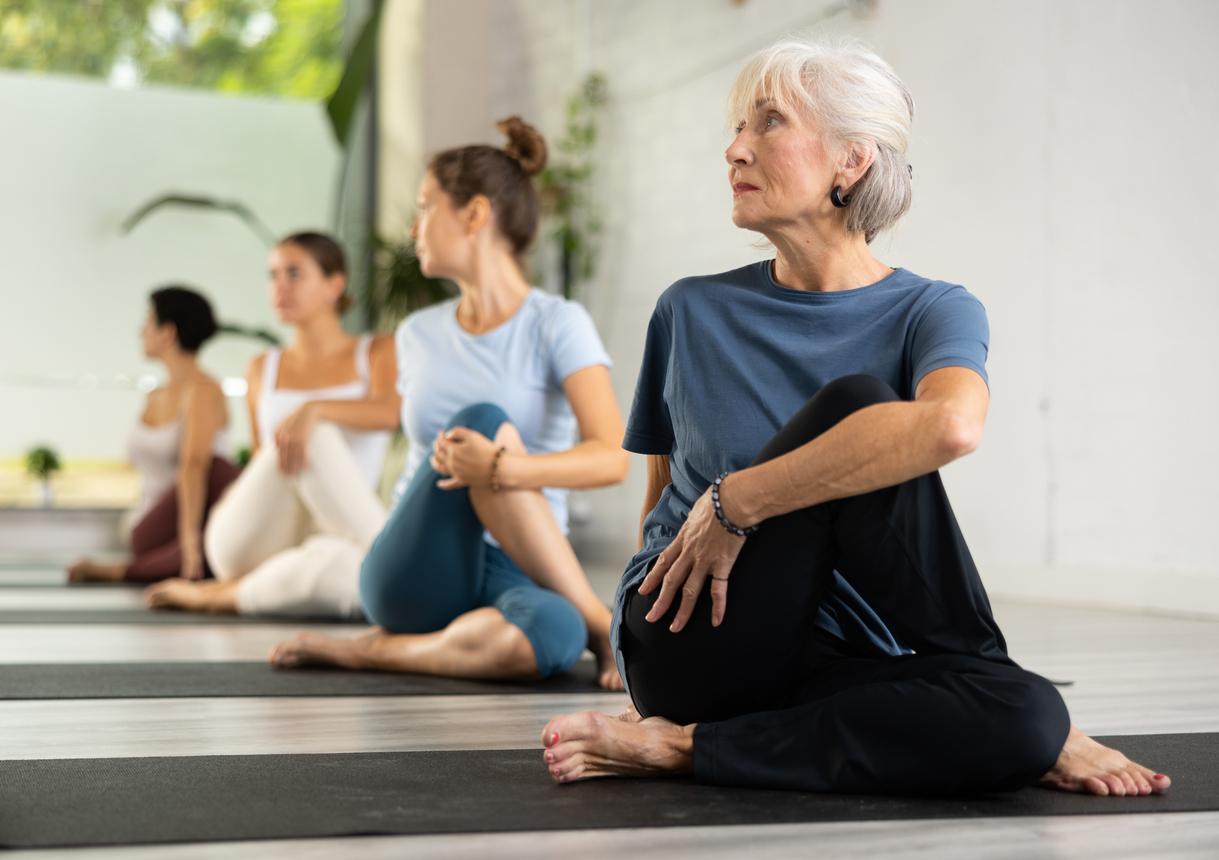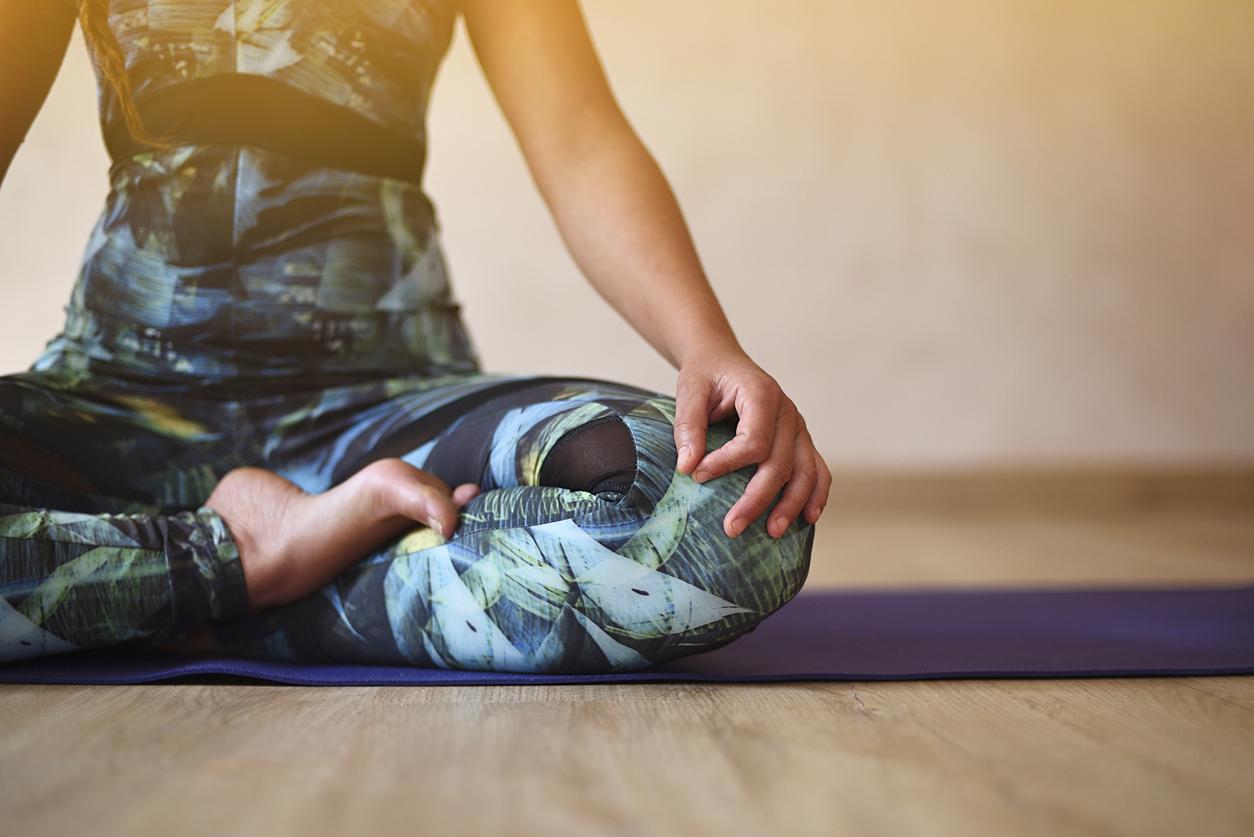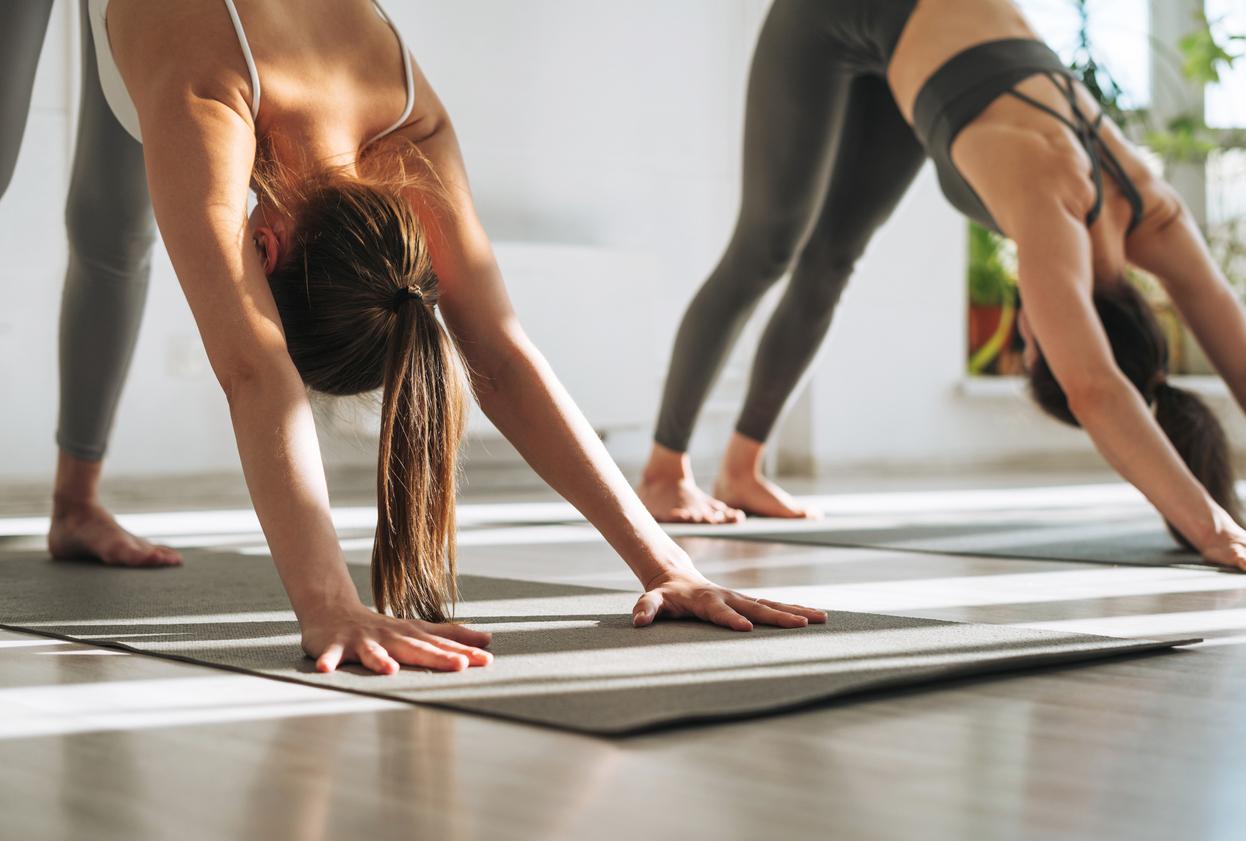
What suits you?
Do you think yoga is slow and floaty? Then think again. Because yoga is for everyone. From calm, spiritual and meditative, to very active. In addition to the more well-known forms of Hatha, Yin and Ashtanga, there are also some lesser known yoga types. Each with a different goal and starting point. See what suits you.
| Kriya yoga | Dru yoga |
| Kundalini Yoga | Jivamukti yoga |
| Iyengar yoga | Anusara yoga |
| Kripalu yoga | satyananda yoga |
Kriya yoga
The name Kriya, originating from Sanskrit, is made up of ‘Kri’ – action, and ‘ya’ – soul. Basically all yoga movements have Kriya in them. By doing kriyas, a certain sequence of postures, you learn to find peace and to break free from the world around you, but also from your ego or any physical impediments.
However, Kriya is also a specific yoga method that assumes that everyone is charged with a karma from past lives. You can neutralize that karma with the help of yoga and meditation. The powerful Kriya technique speeds up the process of neutralization.
Kriya yoga uses energetic exercises that ‘charge’ the body bit by bit. In addition, it includes chakra-focused (spiritual energy centers in the body) meditation and chanting (the rhythmic speaking or singing of words and sounds).
Dru yoga
When you manage your feelings better, you are more in control of your life. That is the premise of Dru yoga. This form is also called ‘yoga of the heart’. You learn to let go of emotions such as sadness and anger with the help of exercises, the so-called Energy Block Release.
They are gentle stretches, twists and bends that release tension from joints and muscles. Visualizations and positive self-suggestions (affirmations) are often also used. Typical for Dru yoga are calm movements in the postures. They are often variations on familiar poses. For example, joints are often relaxed and not overstretched.
Dru yoga places a great emphasis on the stillness within yourself: Dhruva Nakshatra means pole star in Sanskrit. The Dru yoga refers to an inner concentration point, just as the pole star refers to a fixed point in the sky. At Dru, yoga is also seen as a training ground for everyday life.
Kundalini Yoga
This form of yoga comes from the tantric tradition, which is based on the principle that everything is connected. The idea is that you use your body to expand consciousness, whether through yoga, meditation or sex.
The goal is to let energy flow from the lower chakras – energy centers with more earthly and egocentric desires – to the higher chakras, which represent love and connection. This energy is called kundalini. This kundalini energy is stored in your first chakra, at the level of the coccyx, and is also depicted as a coiled sleeping snake. Kundalini yoga is a way to ‘wake up’ the snake and let energy flow through you.
Typical for Kundalini yoga is that there is a lot of movement in the postures to generate the energy: you rotate in circles from the pelvis or when you exhale forcefully pull the navel inwards. A Kundalini class often also consists of breathing exercises, meditations and mantras.
Jivamukti yoga
It’s the yoga on Broadway. Many famous Americans practice Jivamukti yoga. It is one of the nine recognized forms of Hatha yoga and was also at the origin of Power Yoga.
Jivamukti means something like ‘liberation during life’. The movement is based on five pillars: Indian scriptures, spiritual devotion (bhakti), music as a way to get closer to God (Nada yoga), a meditation session in the morning and non-violence (Ahimsa). In practice, the latter means, among other things, that teachers are at least vegetarian and students are encouraged to become vegetarians.
The way in which asanas (postures) are performed within the Jivamukti goes against more traditional forms of yoga. Jivamukte contains athletic and competition-like elements – it can always go higher, faster and better – and is physically demanding. According to the organization, these requirements serve a purpose, namely enlightenment and the removal of mental blocks.
Iyengar yoga
The movement is named after its founder: BKS Iyengar. At first glance, it looks like a highly physical yoga. The emphasis is on precision, aligning postures, holding the poses for a long time, the aids such as blocks and belts and the fact that corrections are made during the lessons. Yet Iyengar yoga is also focused on spirituality.
By practicing yoga very attentively and accurately, you can open the gate to the soul. A balance is created between left and right, below and above, body and mind, reason and feeling and the left and right hemispheres of the brain. By aligning everything, you eventually develop the mind as well.
Anusara yoga
The Anusara yoga is based on the ancient traditions of Tantric philosophy and Hatha yoga. It is an original and modern style. The method is graceful and focused on the heart, on joy and on increasing and spreading shakti: life energy. Jokes are made during the lessons, but that laughter has a higher purpose.
The basis of the Anusara yoga are three A’s: attitude (setting), alignment (alignment) and action (action). The attitude is the ‘intention of the heart’, this is the power behind every yoga posture. With the right intention, any movement can be an expression of the divine. The purpose of Anusara is to awaken our divine nature and celebrate life. You do this by breathing, softening your face and making a smile appear.
With the right alignment, according to Anusara yoga, the life energy can flow optimally through the body. That flow of energy is the action and this results in a sense of unity and freedom. Within Anusara yoga, therapeutic adjustments are often made in the event of injuries.
Kripalu yoga
Actually, Kripalu yoga is not much different from most other yoga forms. Anything is possible in Kripalu. And there are poses and techniques that are said to be typical Kripalu, but in principle you can also encounter them in other yoga movements. Kripalu is a very open, tolerant yoga form in which elements from all kinds are used.
Within Kripalu no distinction is made between good and bad techniques. Asanas, breaths, chakras, mantras: you can come across them all. However, it is mainly about learning to look at yourself honestly. And you don’t have to get complicated for that. Any form of yoga or meditation technique can help you discover who you really are and that is what Kripalu is all about. It’s not about standing on your head; learning to stand on your own two feet is more important.
The starting point for every lesson is that you are as good as you feel at that moment. Kripalu yoga consists of three stages: the physical level, the inner experience and the meditation in movement. In the third stage, everything you have learned comes naturally.
satyananda yoga
Swami Satyananda wanted to make yoga accessible to as many people as possible. According to him, what it was all about is awareness in everything you do. The yoga form contains aspects from different yoga movements. Practically, this means that Satyanada yoga uses asana, pranayama and meditation to harmonize body and mind.
Within the Satyananda yoga there are 34 exercises. The first series consists of anti-rheumatic exercises to loosen the joints. The second group focuses on the digestive system and the third set of exercises aims to improve energy flow in the body and break ‘knots’ in the pelvic area. Chinese doctors also see the exercises as acupuncture without needles.
Not all exercises are covered in every lesson. Sayananda focuses strongly on awareness. The lessons have a more spiritual slant. Mantra chanting is also part of a session, as is a final relaxation according to Yoga Nidra: the sleep of the yogis. In Yoga Nidra you leave the state of normal waking consciousness and go beyond the dream state to a state where you are awake, but where your brain is in a state similar to that of deep sleep.
Sources):















